I want to live in a tiny house community. If I had a nickel for every time I heard this, I could buy a brand-new tiny home. Well, almost.
As a nomadic tiny houser, I sometimes form temporary communities. Like this past winter, in my sister’s backyard. This was not your typical family visit. We stayed for two and half months and became a kind of mini cohousing community. We often shared meals together, contributed to utility bills, and helped with household chores and child care.
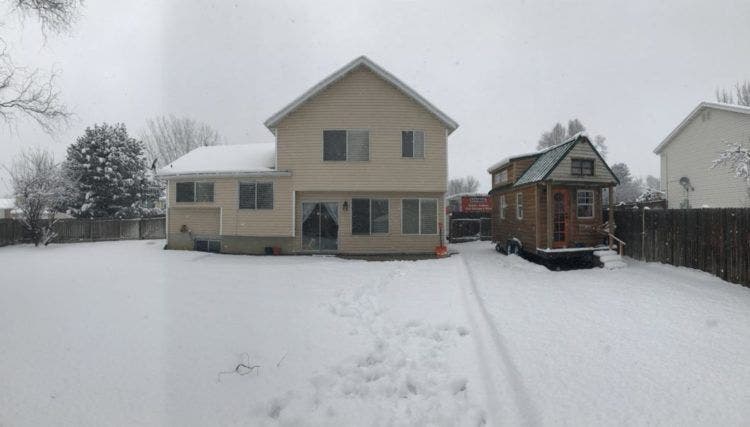
Parked in my sister’s backyard
What is better than one tiny house, a whole village them! Sharing land, financial burden and other resources just make good sense. A tiny house naturally increases your connection to your surrounding and our neighbors. And living in community provides an opportunity to develop even more meaningful relationships and a healthier lifestyle.
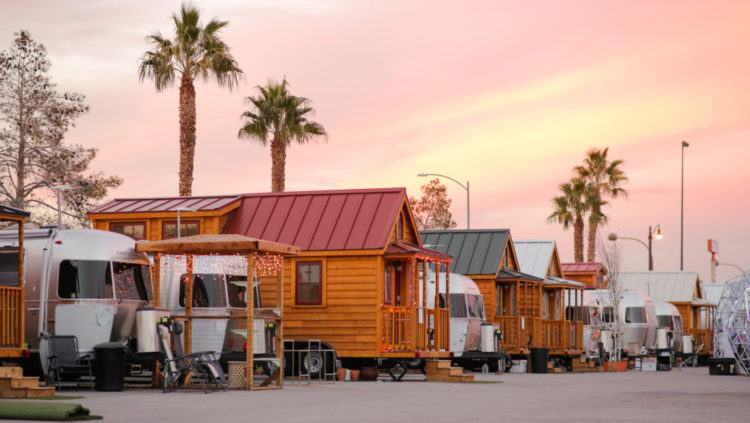
Too many of us Americans live in isolation. As more of us begin to dream tiny, it is only natural that we would crave connection with our tribe. Nothing feels better than being surrounded by those who understand you best. You know the saying “you can’t choose your family, but you can choose your friends”. Forming your own community is a lot like creating a new family. Though, there is much more to that goes into making a community a reality, then finding people with shared values.
When many of us think of creating our dream tiny house community, it involves cultivating a raw piece of the land. The unfortunate reality is that is way too expensive. Finding an affordable piece of land, especially one that suits the employment needs of all your future residents, is the first hurdle. If you need to run utilities, this alone could cost as much as hundreds of thousands of dollars.
Going Places community pyramid! Photo by Kristina Lynn Photography
The Going Places tiny cohousing community is proving how accessible community development can be and how rewarding. A cohousing community is semi-communal housing consisting of a cluster of private homes and a shared community space. Residents share resources like tools and in tasks, such as household repairs.
quote-left
Households have independent incomes and private lives, but neighbors collaboratively plan and manage community activities and shared spaces. The legal structure is typically an HOA, Condo Association, or Housing Cooperative. Community activities feature regularly-scheduled shared meals, meetings, and workdays. Neighbors gather for parties, games, movies, or other events.”
Households have independent incomes and private lives, but neighbors collaboratively plan and manage community activities and shared spaces. The legal structure is typically an HOA, Condo Association, or Housing Cooperative. Community activities feature regularly-scheduled shared meals, meetings, and workdays. Neighbors gather for parties, games, movies, or other events.”
Cohousing Association of the United States
Going Places includes a common house and two tiny homes on wheels with five community members and two pets. They all share the outdoor spaces and the downstairs rooms of the common house. This includes a kitchen, dining/living room, laundry room and for you all you Harry Potter fans, a “room of requirement— office/yoga room/guest room.

Going Places in Portland, OR
Going Places was founded by Lina Menard and her fiance, Isha. The previously helped form Simply Home, a larger but similar community model in Portland, Oregon. This was an experimental backyard tiny house community model. Lina and Isha learned what worked for them and what was challenging. Getting seven busy people on the same page was definitely one of the challenges. There’s nothing like pushing yourself outside of your comfort zone to spur substantial personal growth. That’s just what Lina and Isha achieved, and they fell in love there too. After getting engaged, they were looking to make a change. Time to start fresh.
quote-left
I found that when people move to a cohousing community their relationships with their family and friends often improve because the physical and social structures of the community facilitate a healthier lifestyle.
Households have independent incomes and private lives, but neighbors collaboratively plan and manage community activities and shared spaces. The legal structure is typically an HOA, Condo Association, or Housing Cooperative. Community activities feature regularly-scheduled shared meals, meetings, and workdays. Neighbors gather for parties, games, movies, or other events.”
Lina Menard
Niche Consulting/ Tiny House Collaborative
They began by building a larger tiny home, perfect for two or even three! Lina and Isha also found a relatively affordable small home, in the same neighborhood as Simply Home. The backyard had room for their new tiny and Lina’s first tiny, the Shiny Penny.
Next step, recruit community members!
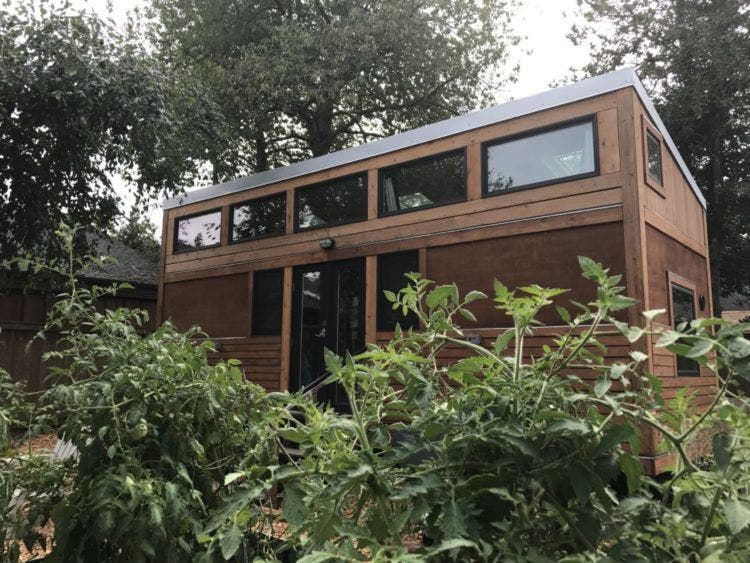
T42, Lina and Isha’s new tiny home
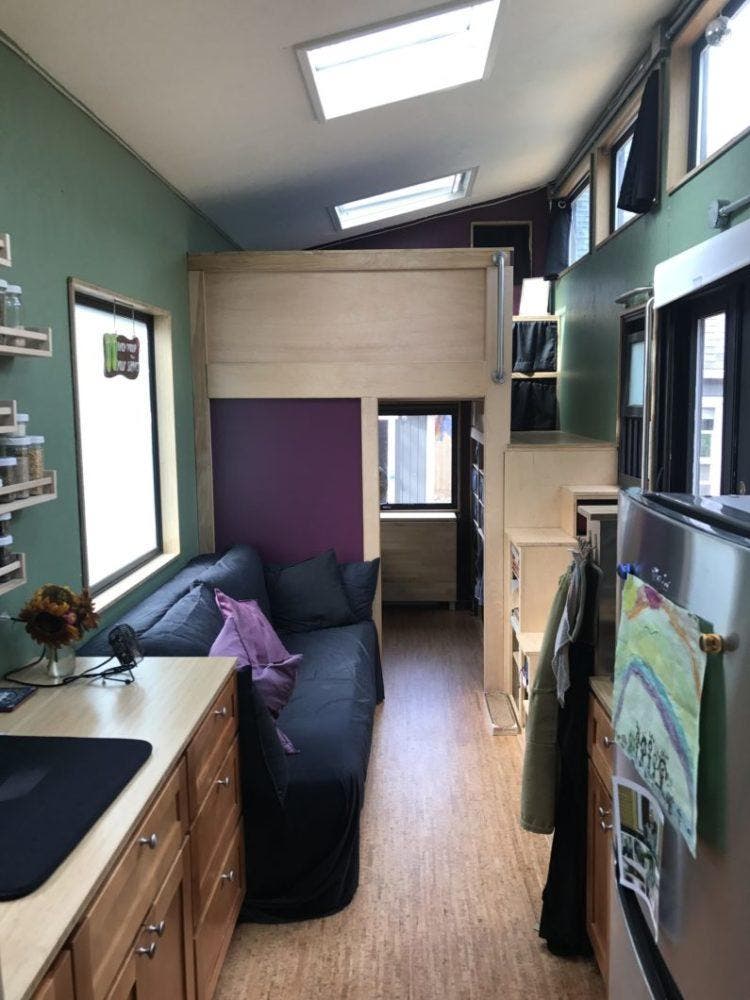
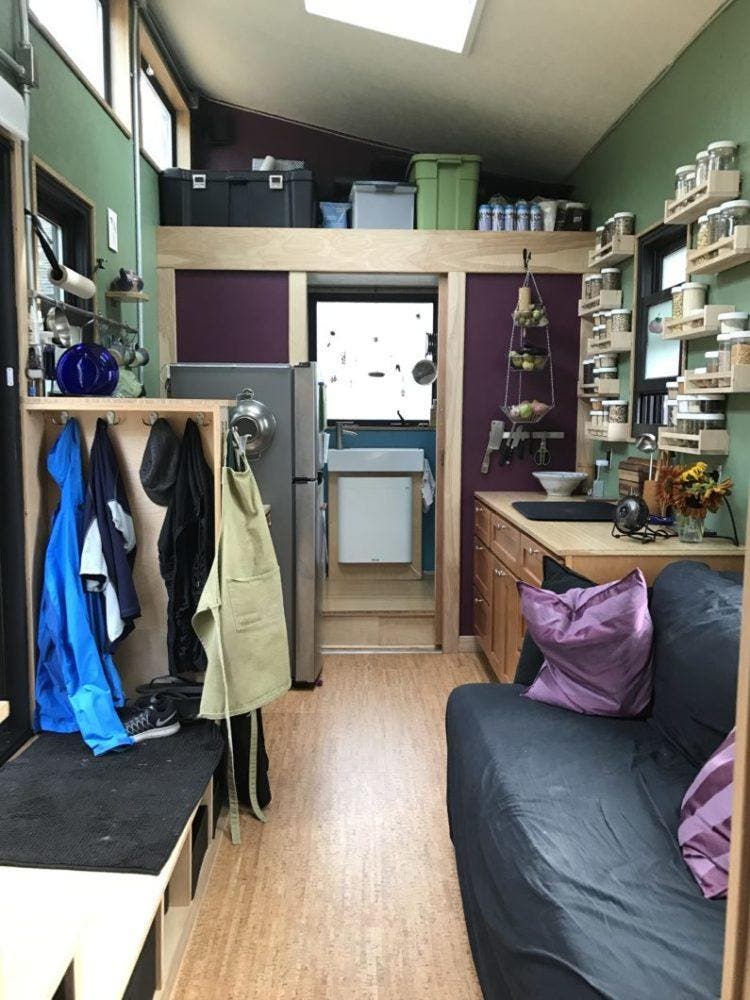
Their friend Lori was next to join. Moving into the Shiny Penny was a perfect transitional step for her, post-divorce. Through a CraigsList ad (not really that creepy), they found married couple, Kyra and Ryan. They were tired of paying the increasingly high Portland rents and were eager to add more meaning to their daily lives. A perfect fit for this cohousing community. Kyra and Ryan now live in the upstairs bedrooms in the common house.
Going Places is able to keep their collective housing costs affordable by simply sharing the expenses. Through community budgeting, they are able to set money aside for ongoing maintenance and special projects, like building a bike shelter.
After finding their tribe, they were all ready to iron out their collective decision-making process, as well as the underlying philosophy.
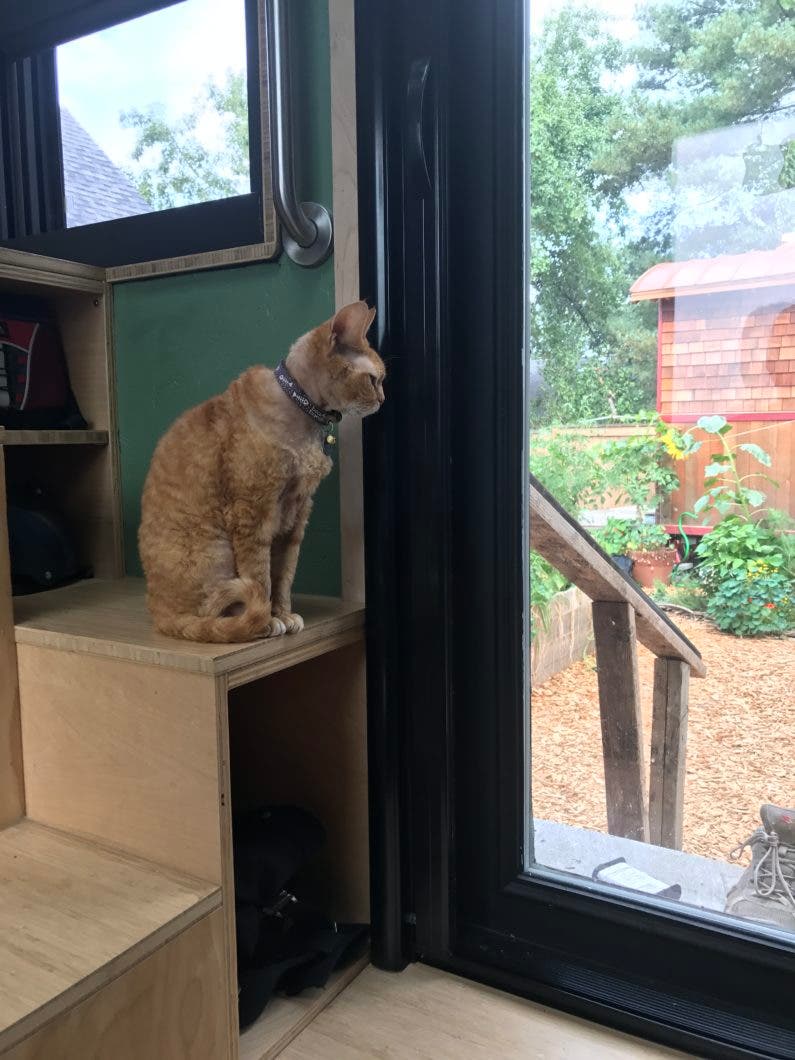
Raffi the cat
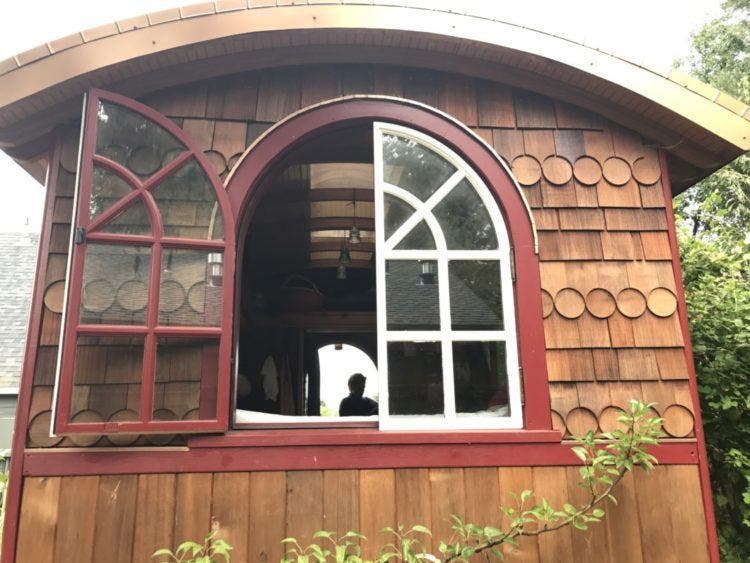
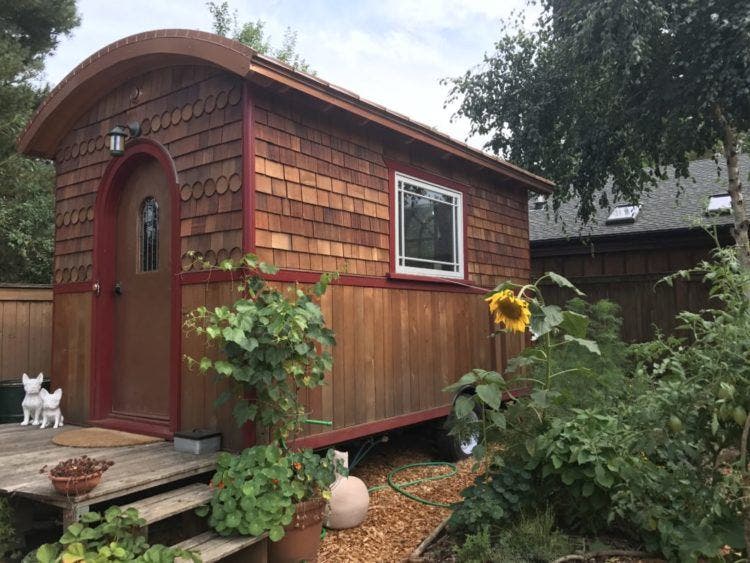
The Lucky Penny
Open communication is everything in relationships, and community building is no different. Together they purposely crafted community living agreements. These establish clear expectations, conflict/resolution guidelines, the division of responsibilities and more. For more on Going Places decision-making process, visit Lina’s blog here. There is no one way to set-up a community. The Cohousing Association of the United States offers sample documents on the different ways to form a new community.
Early on, Lina and Isha made a point to reach out to their neighbors. They discovered which neighbors had concerns about their community and what they could do to effectively address these, which they did. This communication led to building strong bonds and friendships with all their surrounding neighbors. Unfortunately this rarity in too many American neighborhoods.
As a community they share two meals a week together, rotating cooking duties. Fortunately there’s plenty of room for spontaneity and flexibility, as desired or needed. They are all busy people, but they make a concerted effort to make time for each other. Together they also meet once a week for a community meeting; time for fun activities and to take care of any community business. At Going Places, they also hold occasional work parties for household repairs/chores, gardening, and bonding. I witnessed one these such parties and was amazed at how much they were able to get done in just a few hours by working as a team.
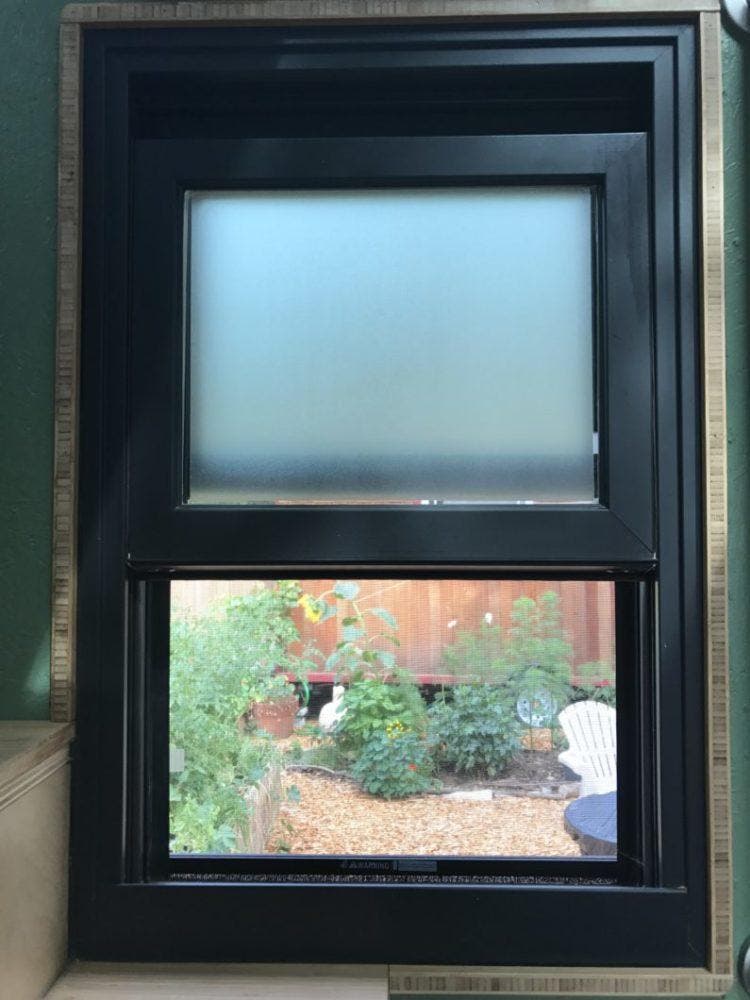
Static window cling frosting for visual privacy
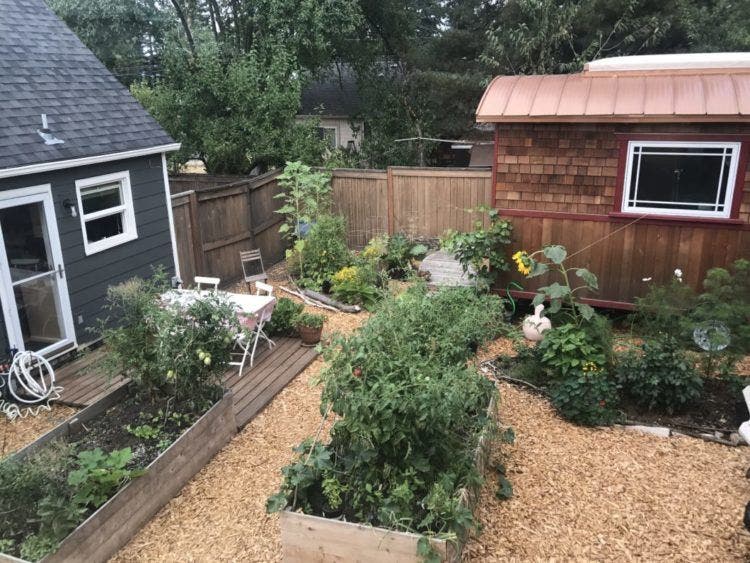
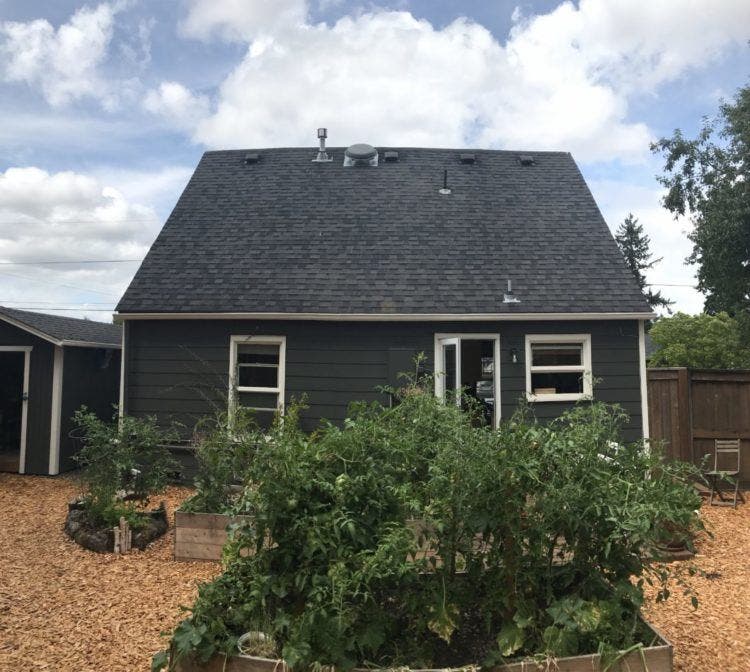
Common house
It is amazing how established and agreed upon expectations can make ‘family’ life so blissful. The tiny cohousing model provides a fresh spin on shared housing and community living.
Going Places is an empowering example of how truly accessible tiny house community building can be.
Going PlacesIt’s amazing how established and agreed upon expectations can make ‘family’ life so blissful. Tiny cohousing provides a fresh spin on possibilities of shared housing. Going Places is an empowering example of how truly accessible tiny house community building can be. Share0Share +10Tweet0
Alexis Stephens
Tiny House Blog Contributor
quote-left
My partner, Christian and I are traveling tiny house dwellers. Together we’ve been on the road two years for our documentary and community outreach project, Tiny House Expedition. We live, breathe, dream the tiny home community every day. This is our life, and our true passion project. We are very grateful to be able experience this inspiring movement in such an intimate way and to be able to share our exploration with all of you.
As a community the share two meals a week together, rotating cooking duties. Though there’s plenty of room for spontaneity and flexibility. They are all busy people, but they make a concerted effort to make time for each other. Together they also meet once a week for a community meeting; time for fun activities and to take care of any community business. At Going Places, they also hold occasional work parties— household repairs, gardening, and bonding. I witnessed on these such parties and was amazed at how much they were able to get done in a few hours by working as a team. It occurred to me that this was the way to cure procrastination arounEarly on, Lina and Isha made a point to reach out to their neighbors. They discovered which neighbors had concerns about their community and what they could do to address these which they did. This communication led to building bonds and friendships with all their surrounding neighbors. Unfortunately this rarity in too many American neighborhoods.They began by building a new larger tiny home, T42. Lina and Isha also found a fairly affordable small home (for Portland), in the same neighborhood as Simply Home. The backyard had room for their new tiny and Lina first tiny, the Shiny Penny. Next step, recruit community members! Their friend Lori was next to join. Moving into the Shiny Penny was a perfect transitional step for her, post-divorce. Then through a CraigsList ad (not really that creepy), they found Kyra and Ryan, a married couple. They were tired paying the increasingly high Portland rents and were eager to add more meaning to their daily lives. A perfect fit for this cohousing community. Kyra and Ryan live in the upstairs bedrooms in the common house. Going Places is able to keep their collective housing costs affordable by simply sharing the expenses. Through community budgeting, they are able to set money aside for ongoing maintenance and special projects, like building a bike shelter.Going Places was founded by Lina Menard and her fiance, Isha. The previously helped form Simply Home, a larger but similar community model in Portland, Oregon. This was an experimental backyard tiny house community model. Lina and Isha learned what worked for them and what was challenging. Getting seven busy people on the same page was definitely one of the challenges. There’s nothing like challenges and pushing yourself out of your comfort zone to spur substantial personal growth. Lina and Isha ended up falling in love there, and after getting engaged, they were looking to make a change. Time to start fresh. Going Places includes a common house and two tiny homes on wheels with five community members and two pets. They all share the outdoor spaces and the downstairs rooms of the common house. This includes a kitchen, dining/living room, laundry room and for you all you Harry Potter fans, the room of requirement—office/yoga room/guest room. The Going Places tiny cohousing community is proving how accessible community development can be and how rewarding. A co-housing community is a semi-communal housing consisting of a cluster of private homes and a shared community space. Residents share resources like tools and in tasks such as household repairs.When many of us think of our dream tiny house community, it involves cultivating a raw piece of the land. The unfortunate reality is that this is way too cost-prohibitive. Finding an affordable piece of land, especially one that suits the employment needs of all your future residents, is the first hurdle. Then you need to run utilities. This alone could cost as much as hundreds of thousands of dollars. What is better than one tiny house, a whole village of course! Sharing land, financial burden and other resources just make good sense. A tiny house naturally increases your connection to your surrounding and your neighbors. And living in a community provides an opportunity to develop even more meaningful relationships and a healthier lifestyle. Too many of us Americans live in isolation. As more of us begin to dream tiny, it is only natural that we would crave connection with our tribe. Nothing feels better than being surrounded by those who understand you best. You know the saying “you can’t choose your family, but you can choose your friends”. Forming your own community is a lot like creating a new family. There is much more to that goes into making a community a reality, then finding people with shared values. As a nomadic tiny houser, I join and sometimes form temporary communities. Like this past winter, in my sister’s backyard. This was not your typical family visit. We stayed for two and half months and became a kind of mini co-housing community. We often shared meals together, contributed to utility bills, and helped with household chores and child care.I want to live in a tiny house community. If I had a nickel for every time I heard this, I could buy a brand-new home. Well, almost.
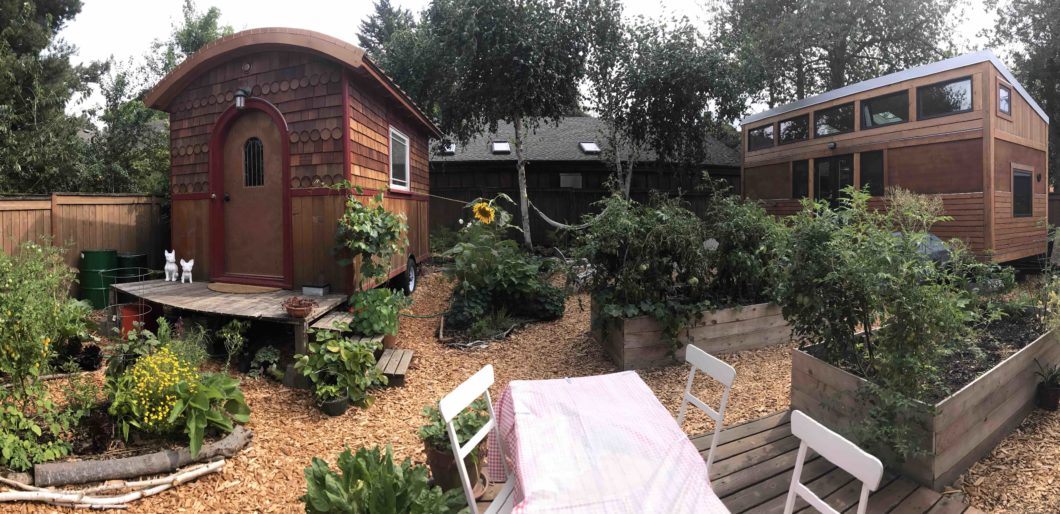
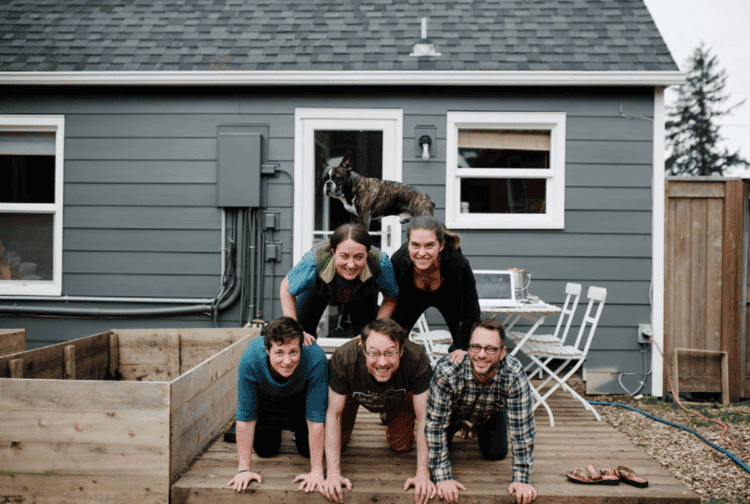
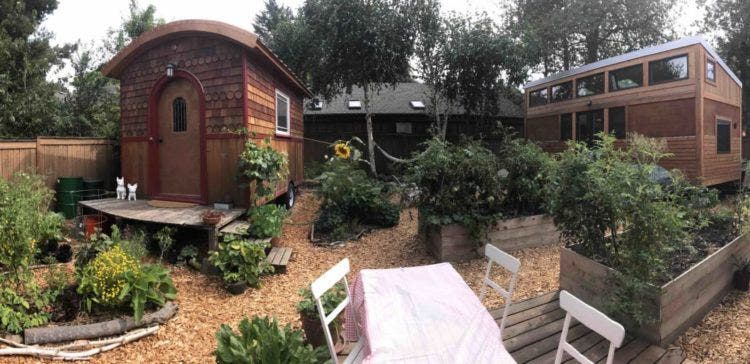
We live in community with my own parents since we parked our little home on their land nearly nine years ago. Losing that relationship, especially now that we have kids, is one of the biggest reasons I can’t imagine moving away.
This is a really interesting type of community! 🙂 I love these tiny houses. Can I rent a house for a week?